- Status: Implemented
Pine martens and mountain hares are among the most charismatic species of the Scottish Highlands. While pine martens occupy Scotland’s pinewoods and broadleaf woodlands, mountain hares can be seen in the montane and alpine zones high up on Scotland’s mountains.
We are working on two separate camera trap projects in partnership with NatureSpy and Alladale Wilderness Reserve to survey both species to get a better understanding of the status of these species in the area, to inform conservation management. This project follows on from our previous camera trap survey in 2021, which aimed to gather an inventory of the species at Alladale.
Honing in on Pine Martens & Mountain Hares
The inventory of species we recorded in our last survey revealed a wonderful array of wildlife and provided useful insights into their abundance. Overall, we captured 56 different species on film including dotterel, ring ouzel, black grouse, golden eagle, red squirrel, water vole, pine marten and mountain hare.
As we had hoped, the results would inform our next step is which to dedicate more attention to these two particular rare and elusive animals. Read on to find out why we're focusing our next survey on these species.
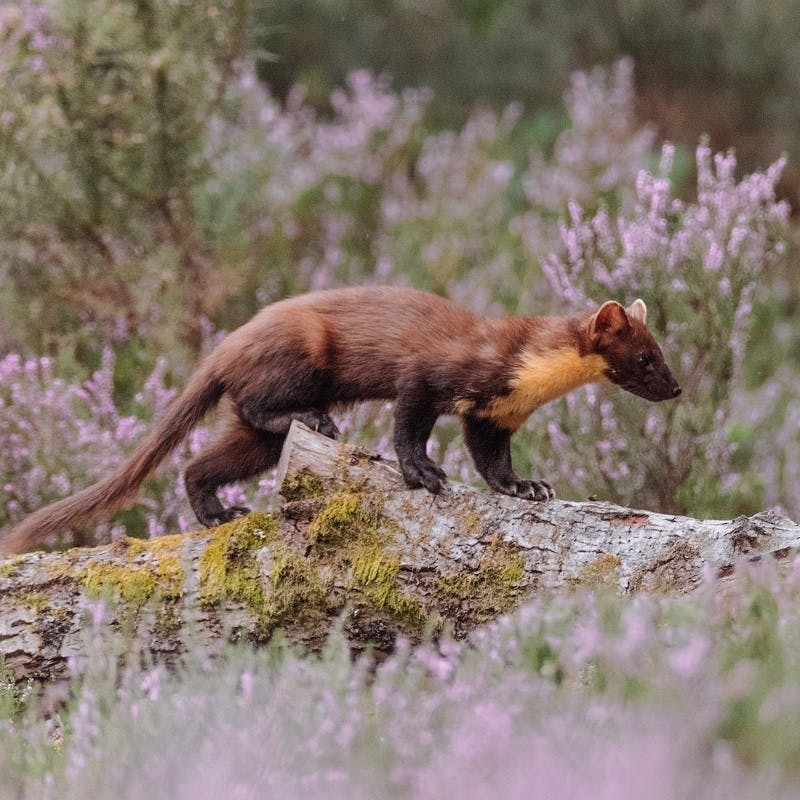
The Status of Pine Martens
The pine marten was once the second most common carnivore in Britain, but by 1915 it was confined to just a few of the more remote areas of Britain. The clearance of woodlands, together with predator control, had a devastating effect on the pine marten population, resulting in the species now being the second rarest carnivore in Britain after wildcats.
Despite these threats, populations were able to persist in the Highlands of Scotland, and this area continues to be the core area of the pine marten distribution in Britain. Since this decline, the pine marten has recovered somewhat following the introduction of legal protection of the species in the 1980s and subsequent conservation efforts, but it is still a rare species, with only an estimated 3,700 adult pine martens across Scotland.
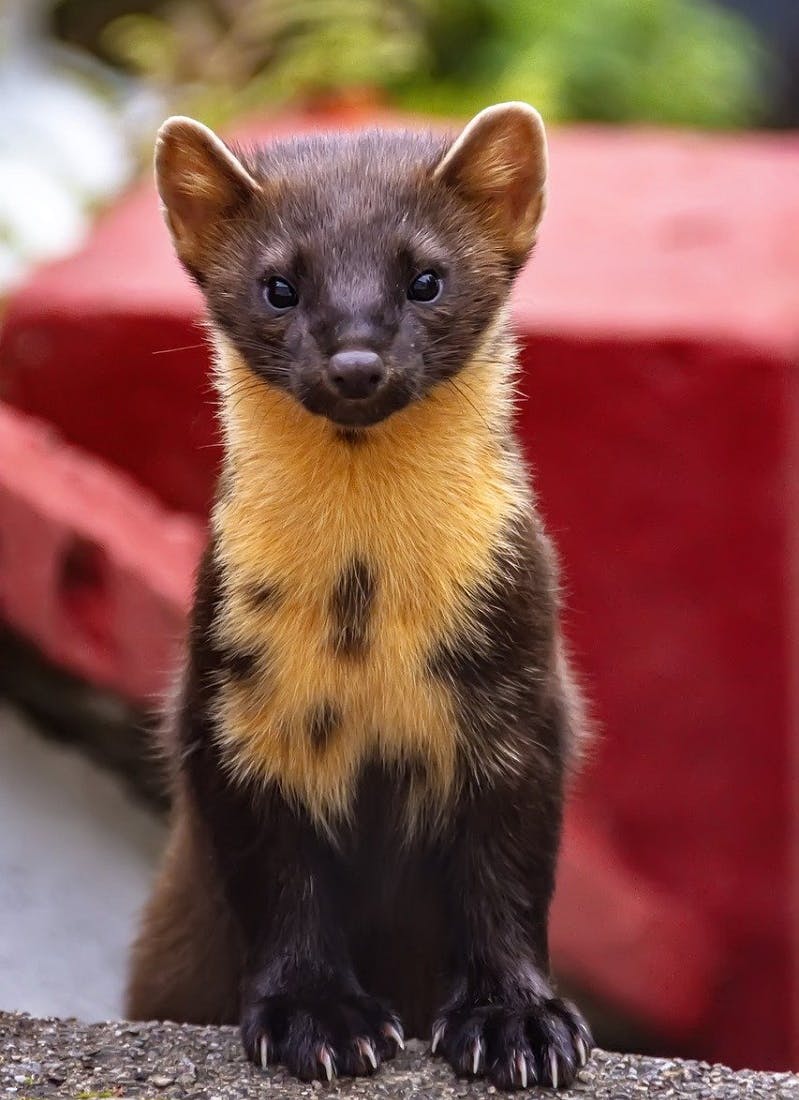
Pine Marten Survey
Little is known of the status of pine martens in the area. Through targeted camera trapping we hope to be able to individually ID pine martens through their unique bib patterns.
To maximise the chances of capturing pine martens on camera, we have set up 7 feeding stations across Alladale and neighbouring Croick and Amat Estates. The feeding stations are baited with peanuts, dates and eggs, all favoured foods of the pine marten. The feeding stations are generally spaced around 2km apart, which is the smallest estimated home-range of a female marten, which reduces the chances that we will miss any animals in the area. They're also designed to be out of reach of other woodland mammals that could snatch the bait ahead of the pine martens!
We will have the camera traps out for around 4-6 months, so expect the survey to be finished by December 2022.
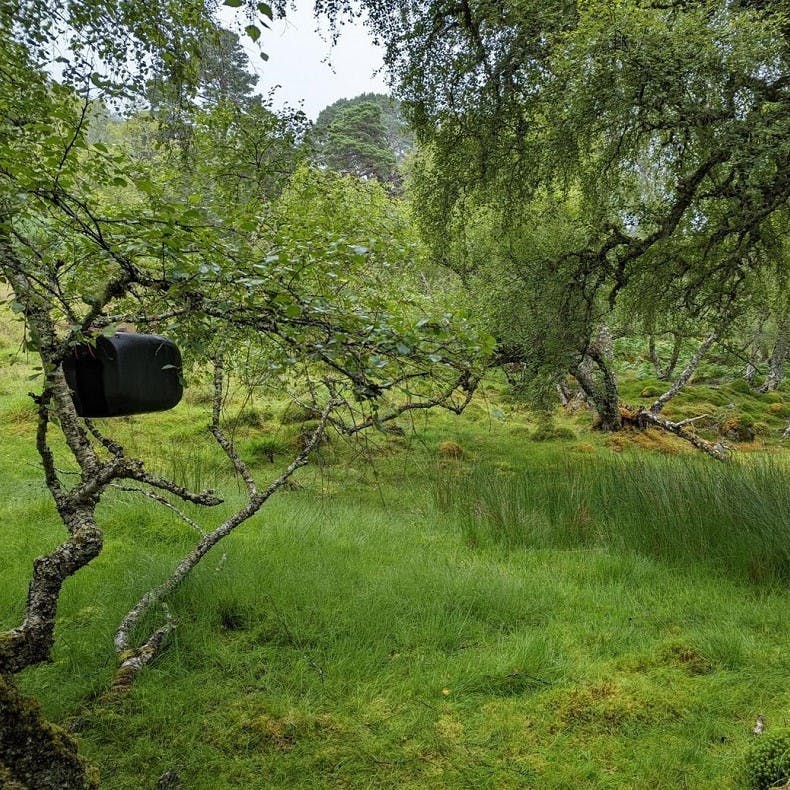
The Status of Mountain Hares
The mountain hare is classified as a Priority Species in the UK Biodiversity Action Plan and was given full protection in Scotland in 2021.
It is rare across many parts of the Highlands, though it fares well on grouse moors, where heather burning provides different ages of heather, which is favoured as food and shelter, and predators like foxes are heavily controlled.
Evidence suggests mountain hare populations are in decline, as a result of habitat fragmentation, habitat loss, and culling. Climate change presents a further threat to mountain hares in Scotland, by reducing the amount of mountain and sub-alpine scrub available to mountain hare. The mountain hare is an important part of the upland ecosystem and their decline has implications for other species of conservation importance, such as the golden eagle.
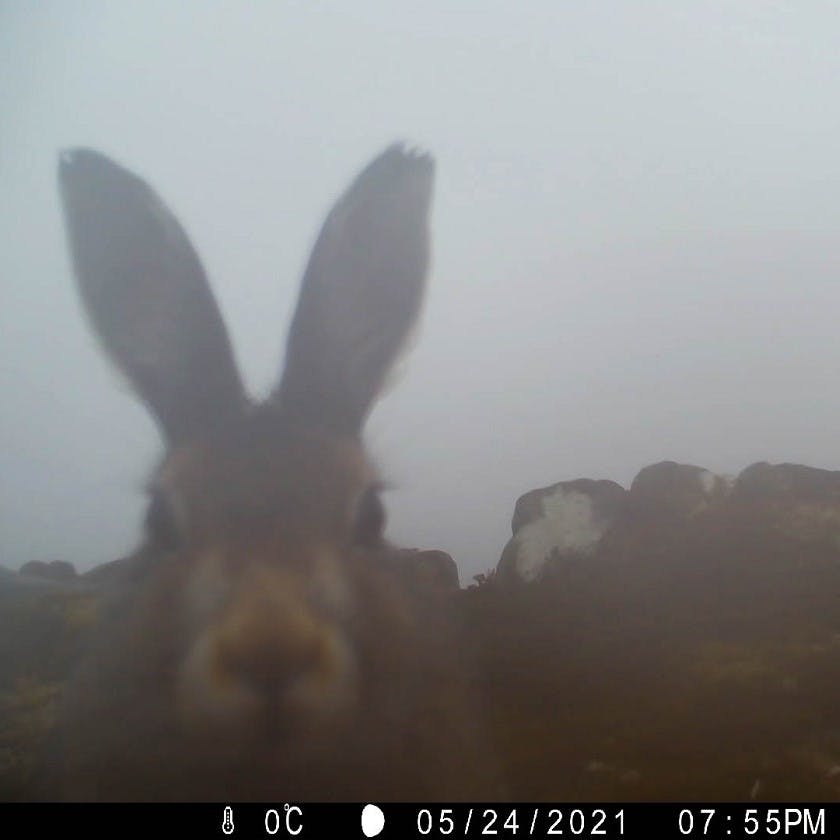
Mountain Hare Survey
There is a lack of reliable data on the status of mountain hares in Scotland, in part due to the challenges of monitoring them. Mountain hares have a highly effective means of camouflage, with their coats changing from grey-brown fur in the summer to white fur in the winter, so they’re well hidden most of the year. They’re also mainly active at night. Combined with the challenging terrain found across much of the Scottish highlands, traditional monitoring techniques, such as spotlight surveys, are logistically challenging and can be dangerous. Camera traps offer an effective tool for mountain hare monitoring in these conditions, as the cameras can be left for long durations, capturing insights into the numbers and activity of mountain hares when they’re most active at night. A previous camera trap survey showed mountain hares to be very inquisitive and on many occasions will approach the camera traps for a good sniff.
We set up a total of 10 camera stations at Alladale, targeting the montane habitats where mountain hares are most likely to occur, and avoiding peatlands and steep hillsides. All of the cameras we installed were at elevations over 610m. The camera traps cover two core areas of interest for mountain hare activity across the reserve, where sightings are most common. The camera traps will be left out in the field for six weeks, which should be enough time to gather sufficient data on encounter rates and activity patterns.
We aim to repeat the survey in winter months to see if mountain hares shift their activity patterns across the seasons.
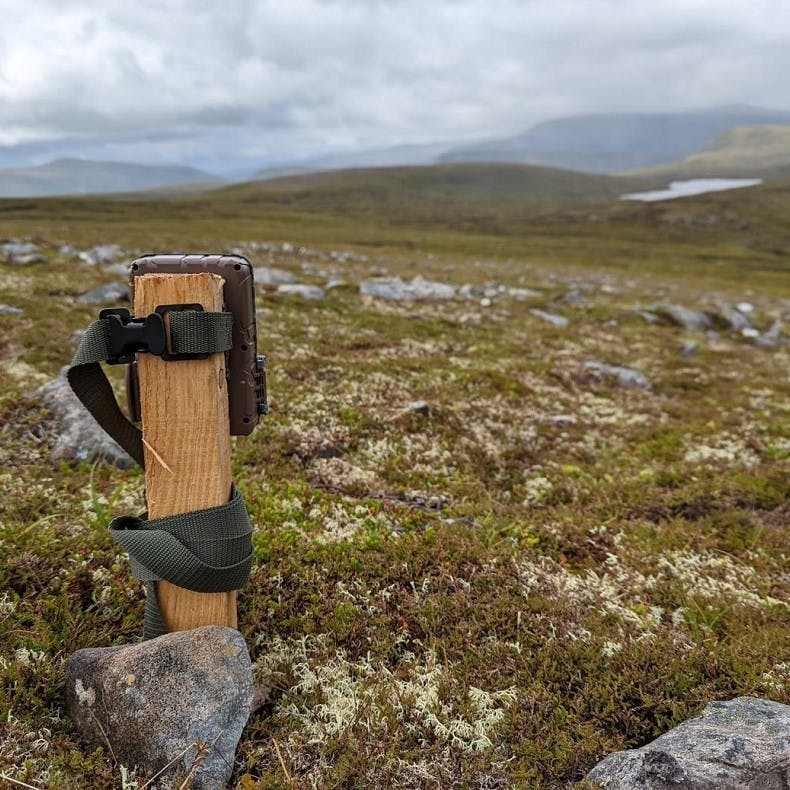
Building our Knowledge Base
We hope the survey will return positive results on these species' populations, as well as that of other wildlife that appear in the footage. Either way, the findings will contribute to our understanding of their distribution, behaviours and interactions with the habitat to build on our knowledge of these understudied species.
Until the footage comes back from this latest project, here is a video we made after the last camera trap survey exposing some of the secret lives of wildlife in the Scottish Highlands!
